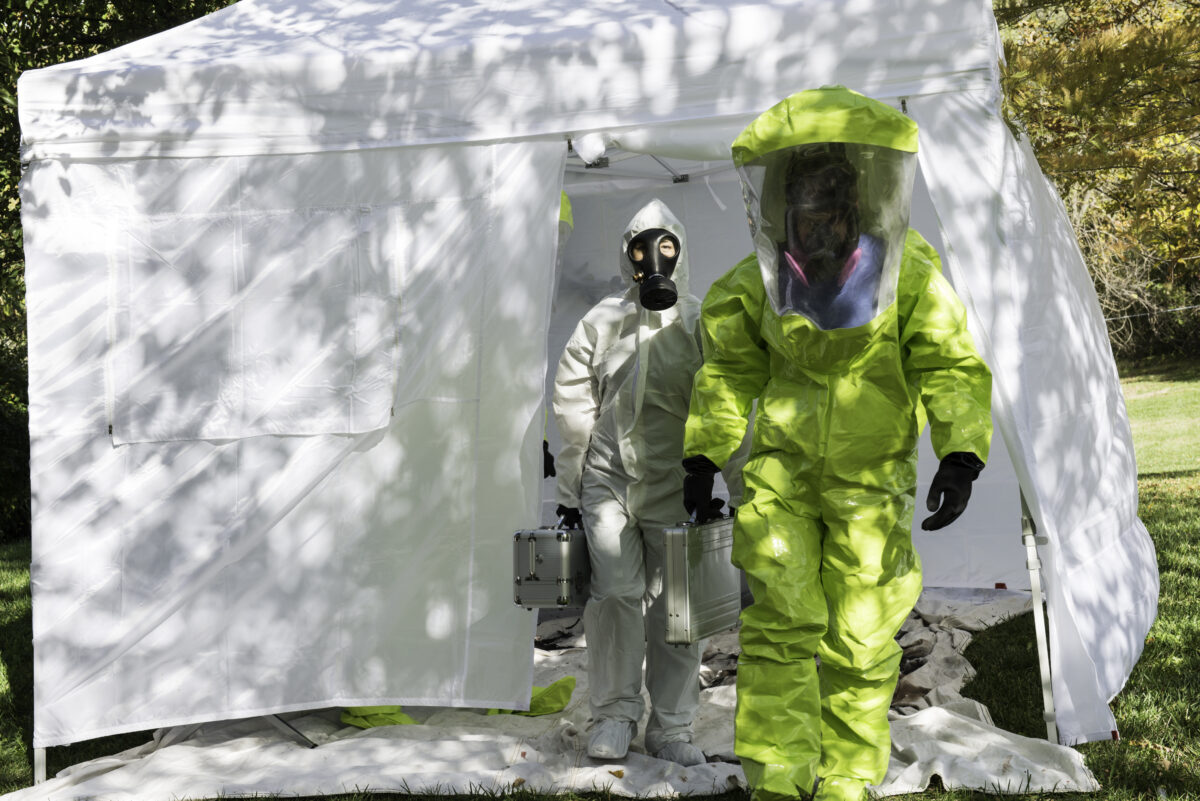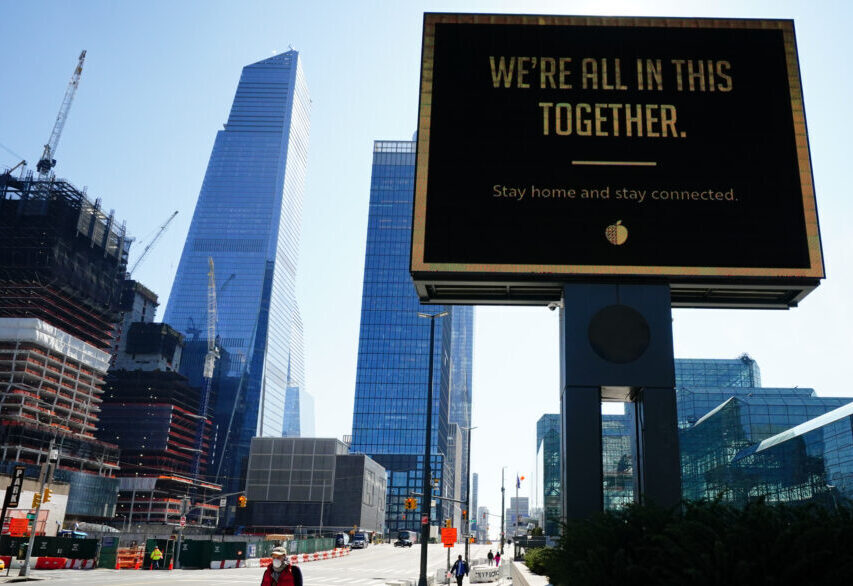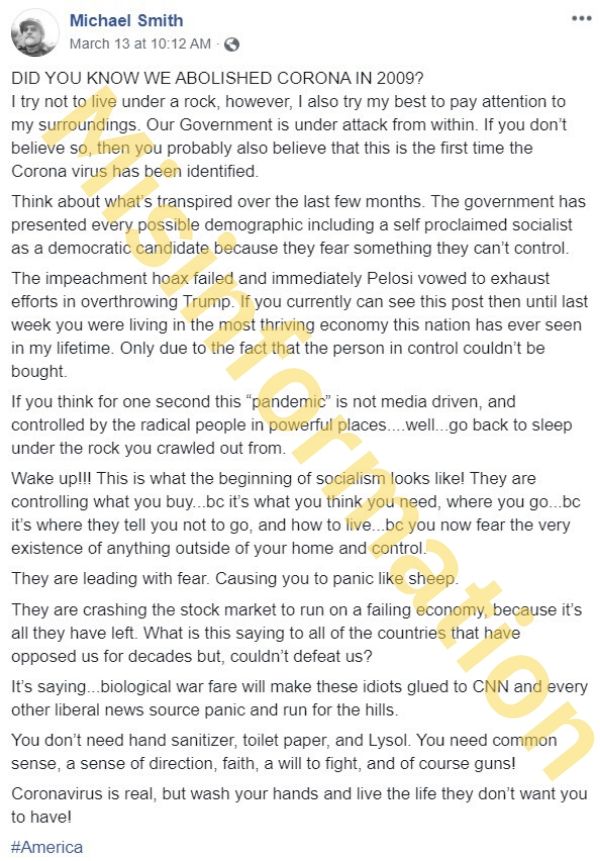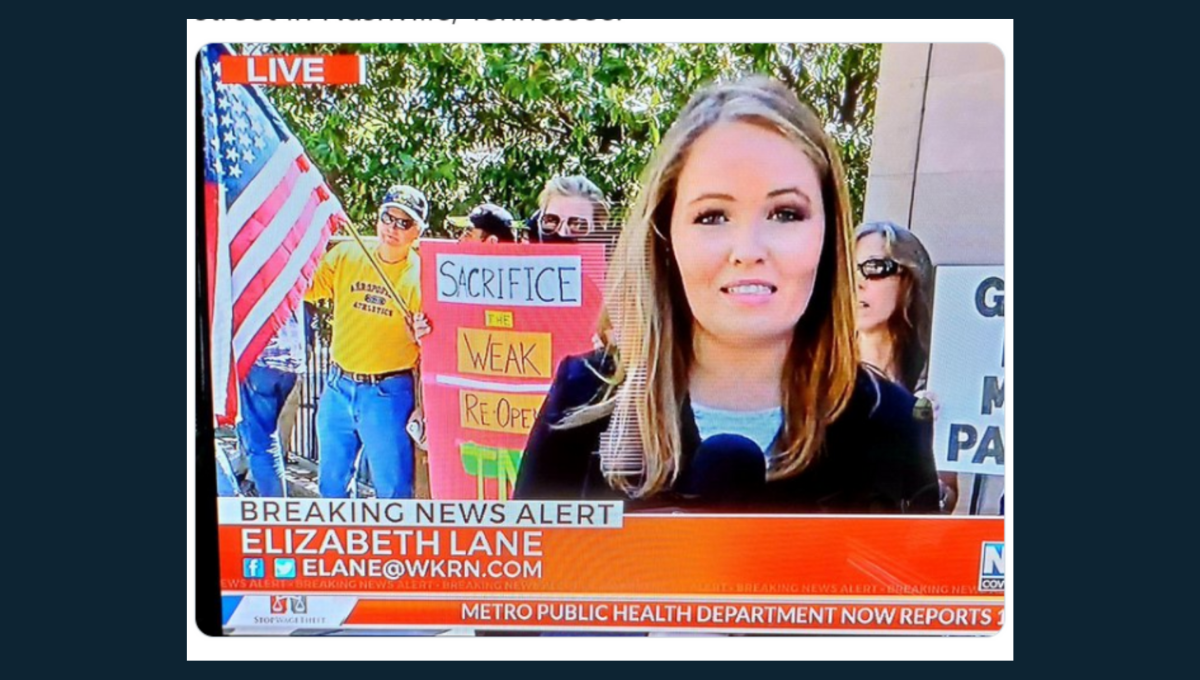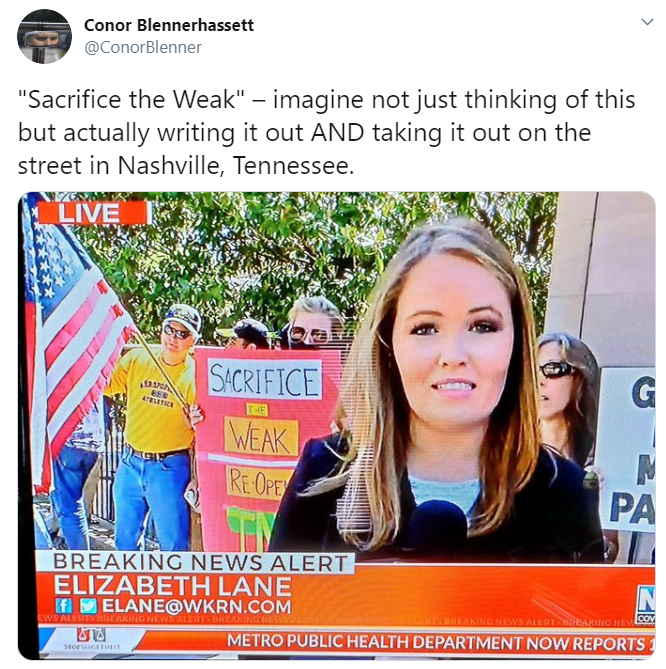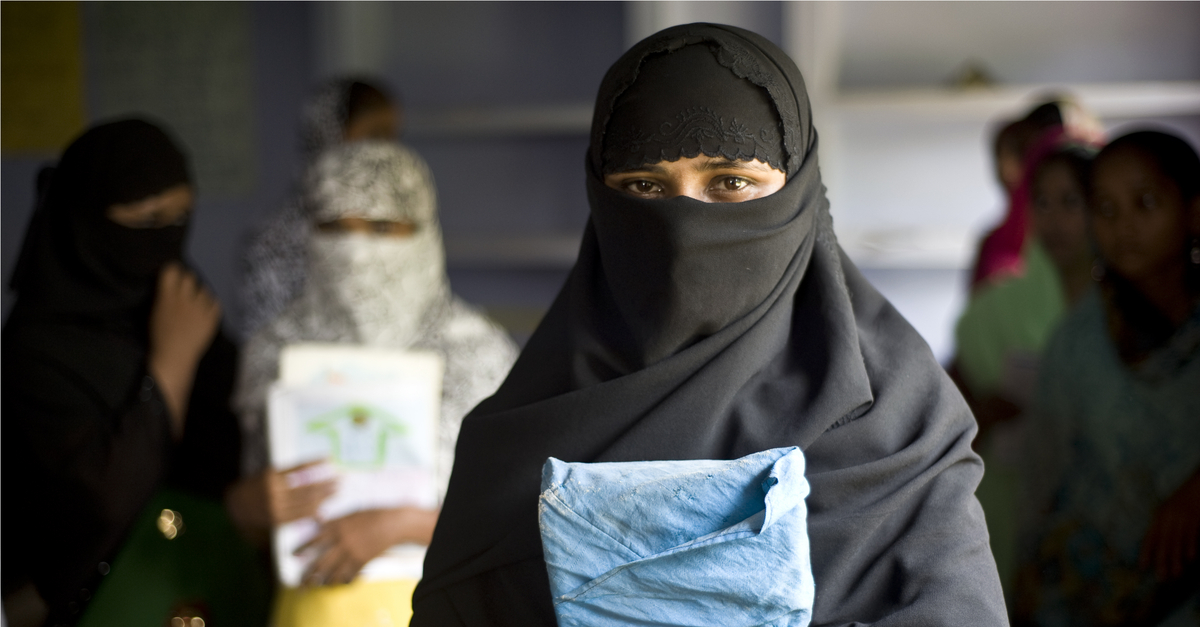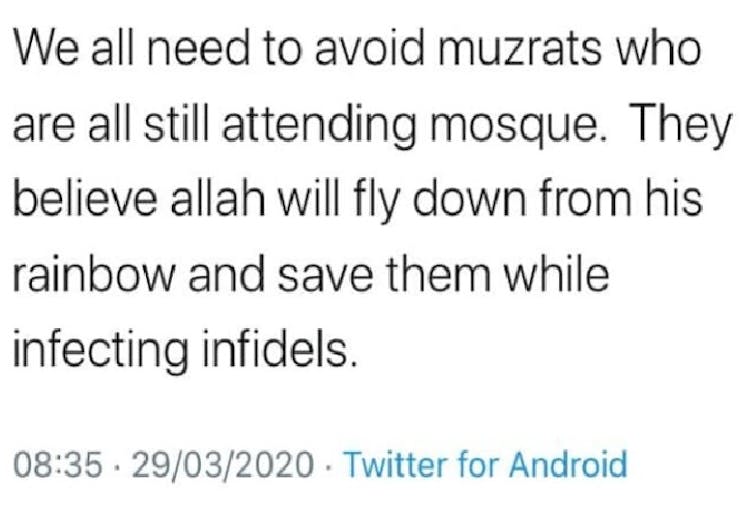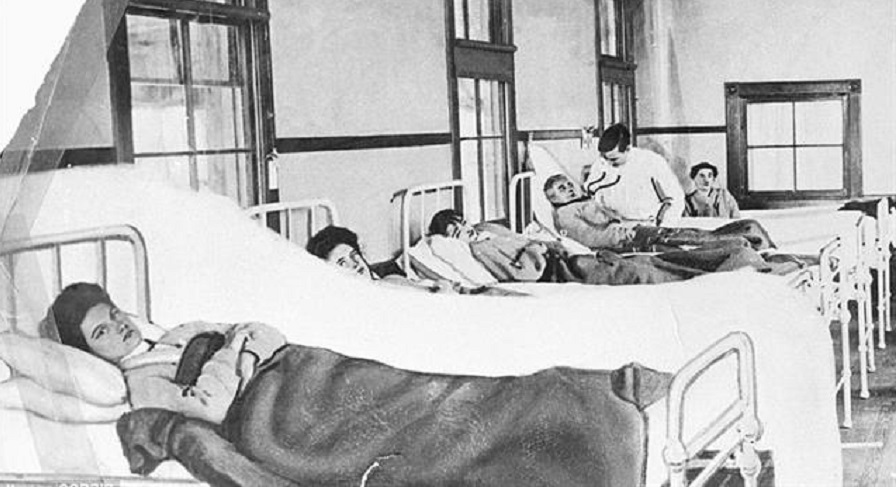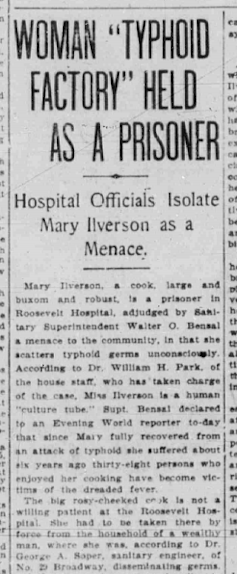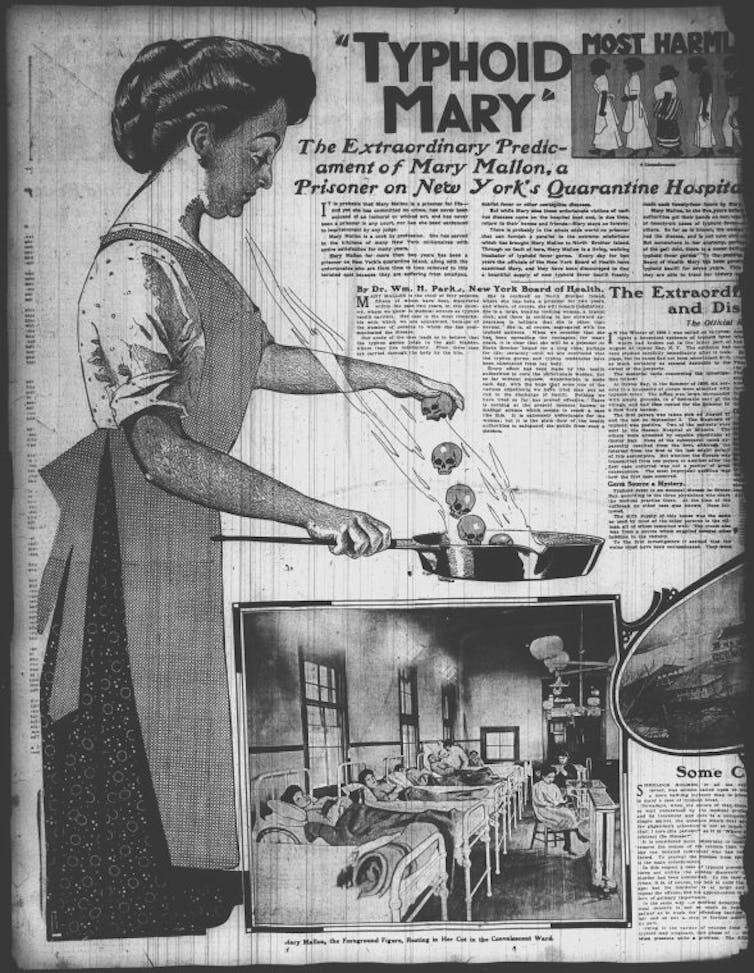As governments fight the COVID-19 pandemic, Snopes is fighting an “infodemic” of rumors and misinformation, and you can help. Read our coronavirus fact checks. Submit any questionable rumors and “advice” you encounter. Become a Founding Member to help us hire more fact-checkers. And, please, follow the CDC or WHO for guidance on protecting your community from the disease.
An increasingly resilient class of coronavirus rumors asserts that SARS-CoV-2, the novel coronavirus that causes the disease COVID-19, was
created in a lab. Most iterations of the rumor claim the virus was
accidentally released from a high-level infectious disease research lab in Wuhan, China — the purported origin of the outbreak — and
some suggest the virus itself was designed there to be a “bioweapon.” This post addresses the origins of these rumors and exposes the falsehoods and scientific realities that undermine such claims.
Origins
When
early reports of what would later become known as COVID-19 spread through the city of Wuhan in late 2019, a shared trait among many of the first patients was that they had been to the Huanan seafood market, a live animal market theorized to be the origin of the COVID-19 outbreak. Wuhan — a city of
over 11 million — also has at least two infectious-disease research labs. One, the Wuhan Center for Disease Control and Prevention, is
apparently less than a mile from the Huanan market. The
other, the State Key Laboratory of Virology (sometimes referred to as the Wuhan Institute of Virology), is a biosafety level 4 (BSL-4) laboratory certified to handle the world’s most deadly pathogens. This higher security lab is located about 7 miles from the Huanan market.
While the higher security
lab in Wuhan has worked with coronaviruses, it does not appear that the Wuhan Center for Disease Control and Prevention — the one close to the market — had published any research on the topic
prior to the pandemic. Both labs, however, have studied viral samples sourced
from bats. Virology research work often involves bats, a proposed source of the novel coronavirus’ transfer from animal to human, because they harbor a uniquely
large reservoir of viruses compared to other mammals. Research on coronaviruses is an
important focus of China’s scientific efforts ever since the 2002 SARS epidemic, which was also caused by a coronavirus.
The proximity of these labs to the Huanan seafood market and these labs’ history with at least tangentially related infectious disease research are the only factual elements to the “created-in-a-lab” theory that are undisputed, rather than speculative or rooted in false scientific claims. For example, it is factual to state that the Chinese government
hid,
downplayed, and
misrepresented to its citizens and the world the threat posed by the novel coronavirus. It is speculative, however, to assert, as U.S. Sen.
Tom Cotton did, that these actions were done to cover up a leak from a lab.
Several evidentiary gaps exist between the observation of virology labs close or somewhat close to a market where early COVID-19 cases were identified and the conclusion that the Chinese government is covering up for the fact that they accidentally released an engineered viral agent from one of these labs. In conspiracy theory circles, these gaps have been filled with extremely flawed or bogus science, the incorrect interpretation of existing science, or both. Not only do these arguments — discussed in detail below — lack merit on their own, factual scientific studies concerning the origin of SARS-CoV-2 actually provide the strongest refutation to date of the claim the virus was “created in a lab.”
Did a ‘Scientific Study’ Conclude the Coronavirus Escaped from a Lab?
A February 2020 document erroneously described by several
media outlets as a “scientific study” provides the supposedly science-based evidence of a virus escaping from a lab.
This
paper, such as it is, merely highlights the close distance between the seafood market and the labs and falsely claimed to have identified instances in which viral agents had escaped from Wuhan biological laboratories in the past. With those two elements, half of them factual, the authors come to the sweeping conclusion that “somebody was entangled with the evolution of 2019-nCoV coronavirus,” and “the killer coronavirus probably originated from a laboratory in Wuhan.” While SARS viruses have escaped from a Beijing lab on at least
four occasions, no such event has been documented in Wuhan.
The purported instances of pathogens leaking from Wuhan laboratories, according to this “study,” came from a Chinese news report (that we believe, based on the similarity of the research described and people involved, to be
reproduced here) that profiled a Wuhan Center for Disease Control and Prevention researcher named Tian Junhua. In 2012 and 2013, he captured and sampled nearly 10,000 bats in an effort to decode the evolutionary history of the hantavirus. In two instances, this researcher properly self-quarantined either after being bitten or urinated on by a potentially infected bat, he told reporters. These events, according to
the 2013 study his research produced, occurred in the field and have nothing to do with either lab’s ability to contain infective agents. The paper also asserts without evidence that infectious waste was merely tossed out of the lab closer to the market as regular trash.
In sum, this paper — which was first posted on and later deleted from the academic social networking website ResearchGate — adds nothing but misinformation to the debate regarding the origins of the novel coronavirus and is not a real scientific study.
Does the Novel Coronavirus Contain HIV-Related Genes?
Another line of pseudoscientific reasoning concerns claims that the virus is just too perfectly built to infect humans to be a virus of natural origin. A big talking point in this space stems from a paper that was later retracted by the authors themselves. On Feb. 2, a team of Indian researchers released a non-peer-reviewed
preprint of a paper asserting to have found “uncanny” similarities between amino acid structures in SARS-CoV-2 and HIV. “The finding,” they argued, “is unlikely to be fortuitous in nature,” seemingly implying a level of human engineering behind the virus.
The paper was swiftly retracted by the authors,
according to STAT News, with commenters noting the study’s rushed methods and likely coincidental, if not entirely incorrect, conclusion. A Feb. 14
paper, this one peer-reviewed, “demonstrated no evidence that the sequences of these four inserts are HIV-1 specific or the [SARS-CoV-2] viruses obtain these insertions from HIV-1.”
Speaking to Snopes by email,
Robert Garry, an infectious disease expert at Tulane University who has
published on the origins of SARS-CoV-2, told us by email that “the so-called HIV sequences are very short — nothing more than random chance.”
Such a reality has not stopped pseudoscientific internet personalities from incorporating these already discredited results into misinformed conspiracy theories while pushing
vaccine skeptical content.
Is SARS-CoV-2 A ‘Chimera’ Virus Built from HIV, Flu, and SARS?
On
March 8, 2020, (and again
on March 22) — well after the aforementioned HIV paper was retracted and refuted — Joseph Mercola, an alternative medicine guru behind the website Mercola.com, published an “expert interview” with
Francis Boyle, a lawyer with no formal training in virology. This interview managed to merge all of the previously described false scientific claims into one narrative that has been shared widely online. In that interview, Boyle asserted:
The COVID-19 virus is a chimera. It includes SARS, an already weaponized coronavirus, along with HIV genetic material and possibly flu virus.
There is this Biosafety Level 4 facility there in Wuhan. It’s the first in China, and it was specifically set up to deal with the coronavirus and SARS. SARS is basically a weaponized version of the coronavirus.
There have been leaks before of SARS out of this facility, and indeed the only reason for these BSL-4 facilities, based on my experience, is the research, development, testing and stockpiling of offensive biological weapons.
Boyle’s knowledge, he stated
explicitly in this interview, does not come from having worked for the U.S. government, from having any sort of security clearance, or from having “access to any type of secret information.” It is unclear, then, what experience he is basing the false claim that “the only reason for these BSL-4 facilities … is the research, development, testing and stockpiling of offensive biological weapons.”
“The purpose of the BSL-4 labs,” Garry told us, “is to design the countermeasures (diagnostics, drugs, and vaccines) to these pathogens.” He added that he knows “many American scientists that collaborate with the Wuhan Institute of Virology,” and that it “does not have any offensive bioweapons development capability.” In response to the weapon stockpile claim, North Carolina State University epidemiology Professor
Matt Koci told us “the idea that level 4 labs are only for weaponizing pathogens [and] that people go and find diseases then weaponize them … makes no sense.”
The remaining assertions appear to have their roots in the two previously debunked claims from above: No, Wuhan’s labs do not have documented cases of accidental SARS releases. No, HIV sequences are not a feature of SARS-CoV-2. Garry told us that “SARS-CoV-2 may well prove to be a recombinant virus” — i.e., one that has viral components sourced from viruses originating in multiple animals — “but this occurred in nature, not in the lab.” It is not, as has been suggested, some sort of creation built by mixing the most extreme parts of known human viruses together. “There is no evidence to support that claim,” Koci told us.
With those bogus scientific claims stripped away, we are left with the same circumstantial evidence present at the top of the story: A virology lab (which does not appear to have worked on coronaviruses) exists in close proximity to the proposed origin of the outbreak, and another, higher-security lab that has worked on coronaviruses is located miles away from the market.
Could science, alternatively, help to rule out the possibility SARS-CoV-2 was created in a lab? Indeed, the actual peer-reviewed research on the deadly adaptations present in the virus are also the strongest argument yet against the notion that it has been engineered.
Scientific Reality: Genomic Data Undercut Claims of an Engineered Virus
Viruses, in general, are tiny fragments of DNA or RNA coated with protein that insert themselves into an organism’s cells. Once there, the virus consumes a cell’s resources and makes copies of itself. The cell dies and the newly created viral material is free to infect other cells. Though viruses do evolve via natural selection like living organisms, their inability to create their own energy through metabolism generally
precludes them from being considered alive.
Coronaviruses are a class of “
enveloped” RNA viruses. They protect themselves with an outer envelope of lipid material.
Coronaviruses, in particular, have spikes that point out of this envelope of protection, a feature that can aid in the infection of cells.
Until the early 2000s, there was limited scientific interest in human coronaviruses, as they only seemed capable of creating mild cold symptoms. The 2002 SARS epidemic, caused by a coronavirus, flipped that conventional wisdom on its head. This particular coronavirus had a
new adaptation: the ability for those pointy spikes to bind to a chemical in human blood called Angiotensin-Converting Enzyme 2 (ACE2). This adaptation, scientists argue, is what
allowed the SARS coronavirus to jump from an animal to a human and cause disease.
The new coronavirus, SARS-CoV-2, also contains this adaptation, but an even stronger variant of it. As
described by Ed Yong in The Atlantic, “the exact contours of SARS-CoV-2’s spikes allow it to stick far more strongly to ACE2 than SARS-classic did.” The novel coronavirus also has another adaptation that makes it good at infecting humans. Spike proteins are composed of two halves and activate only when a chemical “bridge” is broken. In SARS-CoV-2, Yong wrote, “the bridge that connects the two halves can be easily cut by an enzyme called furin, which is made by human cells and — crucially — is found across many tissues.” Not only do these spikes bind strongly to human cells, in other words, but the chemical required to initially activate those spikes happen to be prevalent throughout the human body.
These two adaptations are the features of the coronavirus that cause speculation about it being engineered to kill. The problem, according to a team of researchers who analyzed the genome of SARS-CoV-2 for a March 2020
paper in Nature Medicine, is that if someone wanted to design a virus using methods currently available to science, scientists would not have solved the problem the way nature apparently did, because scientists wouldn’t have predicted it to be a viable solution in the first place.
Over a decade of research following the first SARS outbreak has allowed scientists to develop
computer models that predict, among other things, what human chemicals a theoretical coronavirus could bind to and how strong that bond would be. When researchers plug the new coronavirus into these models, they correctly predict it binds to ACE2, but
incorrectly conclude it to be a weaker bond than SARS-1. In other words, if scientists wanted to create a deadly coronavirus as a weapon, the tools available to them would have suggested the SARS-CoV-2 model would be a waste of time. This, the study’s authors argue, is evidence that the spike adaptation is “most likely the result of natural selection.”
To that point, while the most similar known animal virus to SARS-CoV-2 is currently found in bats, similar coronaviruses also have been found in pangolins — a kind of anteater. While less similar as a whole, these pangolin viruses have similar spike genetics to the novel human coronavirus. This, they say, is further evidence of natural selection. “The pangolin viruses were sequenced after the COVID pandemic started,” explains Tulane’s Garry, who was an author on the Nature Medicine paper. “So yeah — this is a natural thing that no one in a lab would have or could [have] designed.” Such a reality undercuts claims of “chimera” viruses intentionally spliced together by humans, since humans didn’t know these specific spikes existed until after the pandemic began.
As for the second notable SARS-CoV-2 adaptation — the one that allows a chemical in human blood to activate the coronavirus spikes — this specific modification has not yet been found in nature. However, the authors noted, genetic “mutations, insertions, and deletions” do naturally occur in the portion of RNA that would create it. This, they argue, demonstrates that such an adaptation could, theoretically, “arise by a natural evolutionary process.”
In a
commentary piece about this study, National Institutes of Health Director Francis Collins wrote “this study leaves little room to refute a natural origin for COVID-19.” Though researchers do not yet have a clear idea of the exact origin or evolutionary history of SARS-CoV-2, the authors of the Nature Medicine paper provide two potential scenarios, described
here by Collins:
In the first scenario, as the new coronavirus evolved in its natural hosts, possibly bats or pangolins, its spike proteins mutated to bind to molecules similar in structure to the human ACE2 protein, thereby enabling it to infect human cells. This scenario seems to fit other recent outbreaks of coronavirus-caused disease in humans, such as SARS, which arose from cat-like civets; and Middle East respiratory syndrome (MERS), which arose from camels.
The second scenario is that the new coronavirus crossed from animals into humans before it became capable of causing human disease. Then, as a result of gradual evolutionary changes over years or perhaps decades, the virus eventually gained the ability to spread from human-to-human and cause serious, often life-threatening disease.
Researchers do not yet know enough about the new coronavirus to determine which of those two scenarios is more likely, but scientists do know enough to conclude it to be extremely unlikely to have been engineered in a lab for any purpose, including bioweaponry.
The Bottom Line
The theory that SARS-CoV-2 was manufactured in, and escaped from, a lab in Wuhan is based solely on the proximity of infectious-disease labs near a potential source of the COVID-19 outbreak. Several “scientific” claims have been made or manufactured to further bolster the notion that something nefarious is going on with COVID-19 and these labs, but this information comes from non-peer-reviewed papers misconstrued to be actual additions to the scientific record, or from disreputable websites like Mercola.com. The actual scientific facts known about the novel coronavirus leave little room for it to be a virus of human creation, however.
We have little reason to doubt nature is capable of producing a virus like this. After all: “Nature has already created more than enough pandemic threats,” Garry told us.
